You’ve planned the perfect vacation, but there’s one critical detail that could make or break your home’s security while you’re away. Standard timers and basic lighting schedules won’t fool today’s observant burglars who’ve learned to spot predictable patterns. The difference between a home that screams “empty” and one that convincingly mimics natural occupancy lies in seven sophisticated lighting automation strategies that go far beyond simple on-off programming.
Smart Plugs With Randomized Scheduling
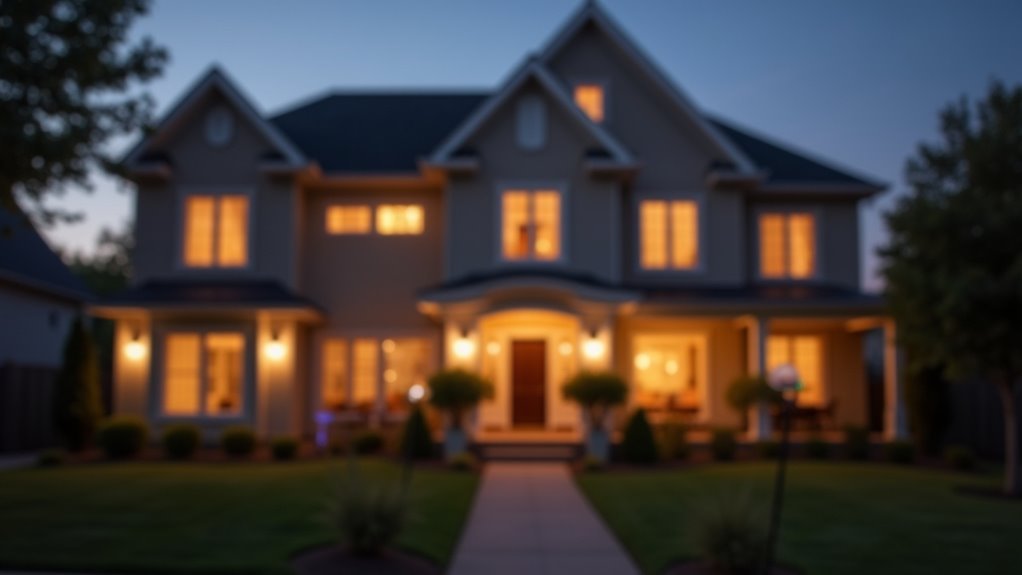
When you’re planning a vacation, smart plugs with randomized scheduling offer one of the most effective ways to create realistic lighting patterns that make your home appear occupied.
These devices let you control multiple lights remotely through smartphone apps, creating unpredictable on-off cycles that vary daily. Unlike basic timers, smart plugs generate different lighting schedules each day, making it nearly impossible for potential intruders to detect patterns indicating vacancy.
You can integrate these smart plugs with existing home automation systems, coordinating them with security cameras and other smart devices for thorough protection.
The randomized schedules simulate natural occupancy behavior while providing energy savings by automatically turning off lights when unnecessary. This dual benefit guarantees your home stays secure and efficient during extended absences.
Motion-Activated Indoor and Outdoor Lighting
You’ll want motion-activated lights that work both inside and outside your home to create the most convincing occupied appearance.
Indoor sensors should trigger lights in key living areas when someone would naturally move through them, while outdoor motion detectors need strategic placement around your property’s perimeter to simulate normal evening activity.
The key is positioning these sensors where they’ll activate naturally without creating obvious patterns that signal you’re away.
Indoor Motion Detection
Since motion-activated lighting systems can transform your home into an intelligent security fortress, they’re essential components of any thorough vacation lighting strategy.
Indoor motion sensors create an illusion of occupancy by automatically illuminating different rooms when triggered, making it appear someone’s home even when you’re away.
These systems integrate seamlessly with smart home automation platforms, enabling you to monitor your property remotely.
You’ll receive real-time notifications on your smartphone whenever motion’s detected, allowing immediate response to potential security threats.
Key benefits of indoor motion detection include:
- Automated room-by-room lighting that mimics natural occupancy patterns
- Smartphone alerts for immediate security awareness
- Adjustable sensitivity settings to prevent false triggers from pets
- Energy-efficient operation with customizable timer controls
This intelligent approach greatly enhances your home’s security profile during extended absences.
Outdoor Perimeter Security
While indoor motion detection creates the illusion of activity inside your home, outdoor perimeter security lighting forms your property’s first line of defense against potential intruders.
Motion-activated lighting instantly illuminates entry points and pathways when unexpected movement occurs, making your property less attractive to burglars. You can integrate these lights with outdoor cameras and smart home integrations to receive real-time alerts on your phone, allowing remote monitoring of your property.
Smart outdoor lights enhance security by triggering upon detecting motion, providing immediate visibility around your home’s perimeter.
When combined with your existing security system, this motion-activated lighting doesn’t just deter intruders—it helps create the illusion of occupancy throughout your vacation, suggesting someone’s actively monitoring the property.
Sensor Placement Strategy
Strategic sensor placement makes the difference between effective security coverage and wasted automation potential. Your motion-activated lights need careful positioning to maximize deterrence while minimizing false triggers.
For ideal sensor placement strategy, follow these guidelines:
- Install outdoor sensors 6-8 feet high near entry points like doorways and driveways to detect movement effectively.
- Position indoor motion lights in hallways and common areas to simulate natural occupancy patterns.
- Integrate with smart home systems to coordinate motion-activated lights with security cameras for enhanced surveillance.
- Test and adjust sensitivity settings regularly to avoid unnecessary alerts from small animals while maintaining quick responses.
When your smart home systems synchronize motion detection with security cameras, you’ll create thorough coverage.
This coordinated approach guarantees intruders can’t approach undetected while you’re away.
Away Mode Programming for Occupied Home Simulation
When you’re away from home for extended periods, Away Mode programming transforms your smart lighting system into a sophisticated security tool that mimics natural occupancy patterns.
You’ll schedule your smart lights to turn on and off at random intervals, creating convincing illusions that fool potential intruders. This feature integrates seamlessly with your existing home security system through customizable smart home apps, letting you control timing and duration remotely.
You can enhance energy efficiency by pairing Away Mode with smart power strips, ensuring lights operate only when necessary.
Research shows homes with automated lighting face fewer break-in attempts because random light patterns effectively simulate human activity.
You’ll gain invaluable peace of mind during vacations, knowing your occupied home simulation runs automatically while you’re enjoying time away.
Sensor-Triggered Light Automation Systems
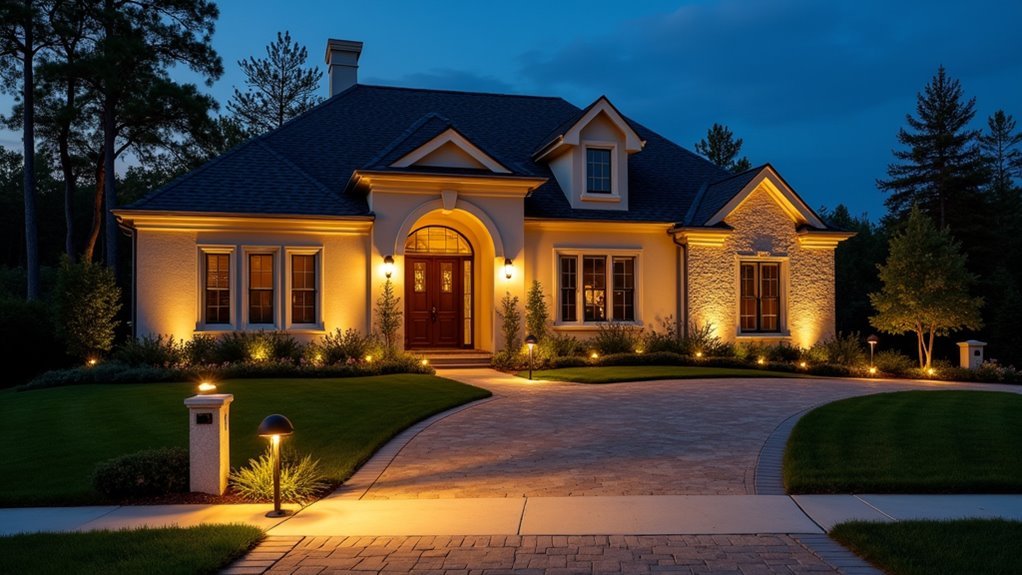
You’ll want to upgrade beyond basic timers to sensor-triggered systems that respond to actual movement around your property.
Motion detection triggers activate lights when someone approaches entry points, while door and window sensors illuminate specific areas the moment they’re opened or disturbed.
These responsive systems create realistic occupancy patterns that can’t be easily predicted by potential intruders watching your home.
Motion Detection Triggers
Because motion detection triggers activate lights the moment movement is detected, they’re one of your most effective weapons against potential intruders during vacation periods.
These systems automatically illuminate outdoor and indoor lights when movement occurs, creating the illusion that someone’s home.
You’ll benefit from these key features:
- Smart integration – Customize sensitivity levels and detection ranges through smart home platforms
- Mobile alerts – Receive instant notifications for real-time monitoring of any detected movement
- Programmable schedules – Set lights to trigger only during nighttime hours when security’s most critical
- Strategic illumination – Light up pathways, entryways, and dark corners simultaneously
Motion detection systems enhance overall home security by eliminating hiding spots and making it nearly impossible for intruders to approach your property unnoticed while you’re away.
Door Window Sensors
While motion sensors detect movement in open areas, door and window sensors take your vacation security to the next level by monitoring specific entry points where intruders are most likely to breach your home.
These door window sensors integrate seamlessly with smart lighting systems, automatically triggering lights the moment someone opens a door or window. You’ll receive instant smartphone notifications, keeping you informed of any potential intrusions in real-time.
The beauty of sensor-triggered light automation lies in creating an effective occupancy illusion. When lights turn on unexpectedly at entry points, burglars assume someone’s home and typically retreat.
You can customize these home security systems for different scenarios and times, ensuring your property stays protected. This targeted approach considerably reduces break-in risks by illuminating areas intruders attempt to access.
Smart Power Strips With Variable Timer Controls
Smart power strips with variable timer controls take vacation lighting automation beyond the predictable patterns of traditional timers.
These devices randomize your lighting schedules, making it nearly impossible for potential intruders to detect patterns that reveal when you’re away. You’ll create a more convincing illusion of occupancy that keeps your home safe.
Key advantages include:
- Randomized scheduling – Creates unpredictable on/off patterns that mimic natural household activity
- Remote app control – Monitor and adjust your lighting from anywhere for complete peace of mind
- Energy efficiency – Automatically shut off devices when not needed, reducing power consumption
- Multiple device management – Control various lights and appliances through a single system
Smart power strips enhance your security strategy while providing convenient automation that adapts to your lifestyle needs.
Automated Room-to-Room Lighting Sequences

When you’re away from home, automated room-to-room lighting sequences create the most realistic simulation of daily life by moving lights throughout your house in natural patterns.
These smart lighting systems turn lights on and off in different rooms at predetermined intervals, making it appear you’re moving from space to space naturally.
Smart lighting systems like Philips Hue offer vacation modes that randomly activate lights across various rooms, enhancing the illusion of occupancy.
You can customize timing and sequences to vary patterns, which strengthens security by preventing predictable routines that burglars might notice.
The visual cues these automated room-to-room lighting sequences provide effectively deter potential break-ins.
You’ll control everything remotely through smartphone apps, giving you complete peace of mind while traveling.
Color-Changing Smart Bulbs for Enhanced Security
How can you take your vacation lighting security to the next level? Color-changing smart bulbs offer advanced features that go beyond basic on/off scheduling.
These innovative devices can simulate occupancy by creating realistic lighting patterns that mimic natural human activity throughout your home.
Smart lighting technology creates convincing illusions of home occupancy through automated patterns that replicate typical household movement and activity.
Smart bulbs like Philips Hue and Wyze provide vacation modes that randomly alternate colors and brightness levels, making it appear someone’s moving between rooms.
You can enhance security further by:
- Programming lights to mimic natural daylight patterns
- Integrating with motion sensors for automatic activation
- Setting random color changes at varying intervals
- Controlling settings remotely via smartphone apps
This real-time control capability gives you peace of mind during extended absences, allowing you to adjust lighting instantly from anywhere.
Frequently Asked Questions
How Much Does It Cost to Set up a Basic Vacation Lighting Automation System?
You’ll spend around $50-200 for a basic setup with smart switches or plugs and a hub. Higher-end systems with multiple zones and advanced features can cost $300-500, depending on your home’s size.
Can Vacation Lighting Automations Work During Power Outages or Internet Disruptions?
Most vacation lighting systems won’t work during power outages since they need electricity. However, some smart switches retain programming and resume schedules when power returns. Internet disruptions don’t affect pre-programmed schedules already stored locally.
Will Automated Lights Significantly Increase My Electricity Bill While I’m Away?
You’ll see minimal electricity cost increases with LED bulbs and smart scheduling. Automated lights typically run 2-4 hours daily, costing just $2-5 monthly. Strategic timing actually reduces usage compared to leaving lights on constantly.
How Do I Prevent Neighbors From Noticing My Lighting Patterns Are Automated?
You’ll want to vary your lighting schedules randomly, use different rooms throughout the week, and mimic your actual habits. Don’t stick to rigid patterns that repeat nightly since that’s obviously automated.
What Happens if My Smart Lighting System Malfunctions While I’m on Vacation?
You’ll face potential security risks if your smart lights fail during vacation. Install backup manual timers, give trusted neighbors spare keys, or use multiple automation systems. Always test your setup thoroughly before departing.

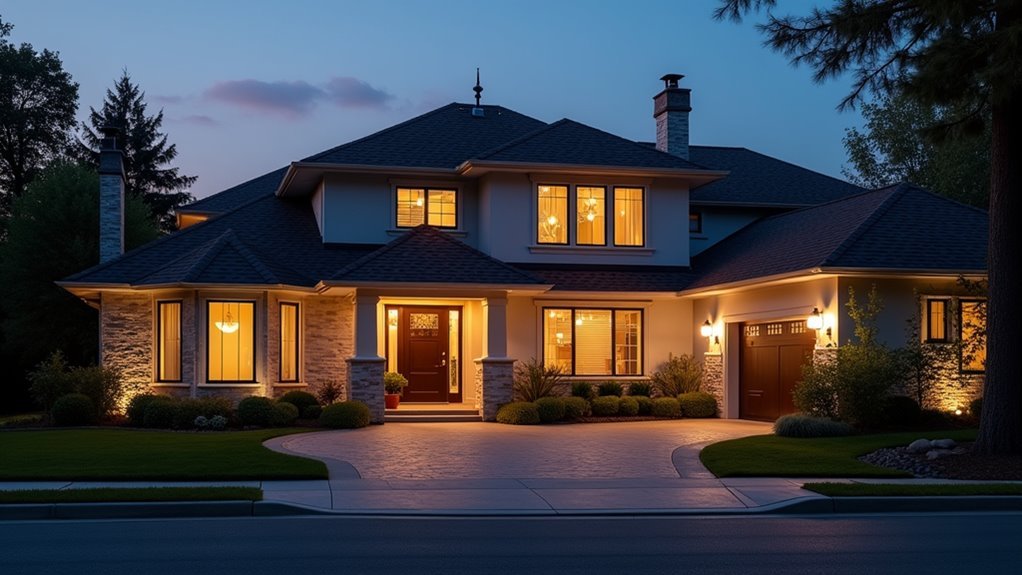
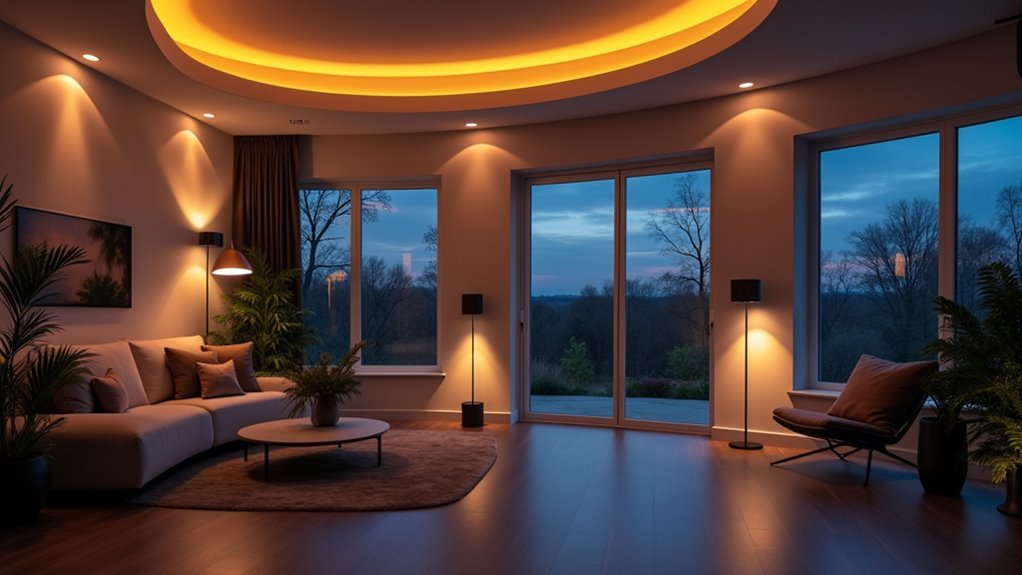
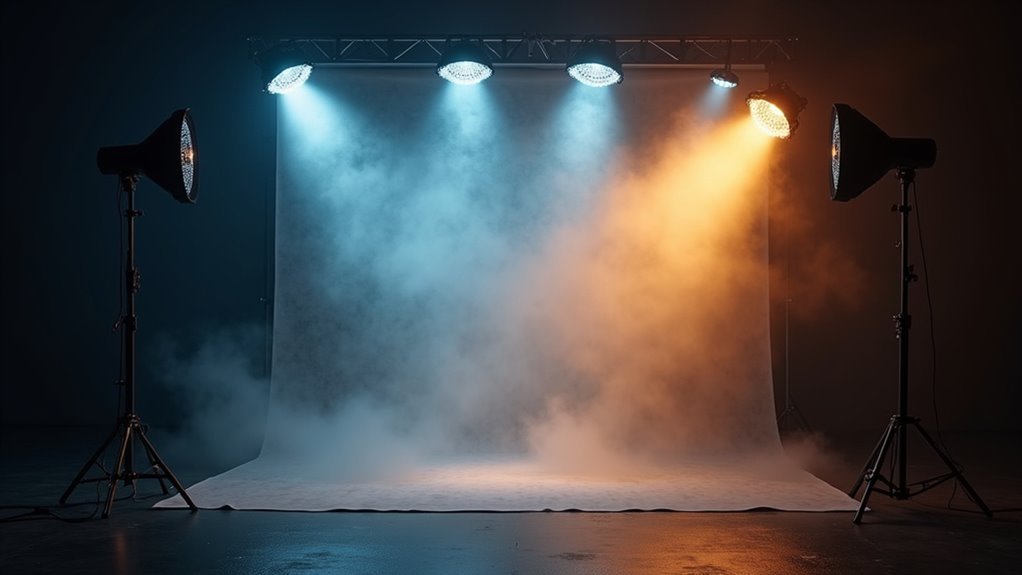
Leave a Reply